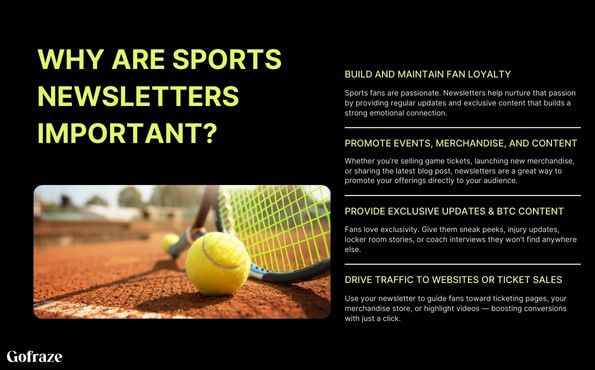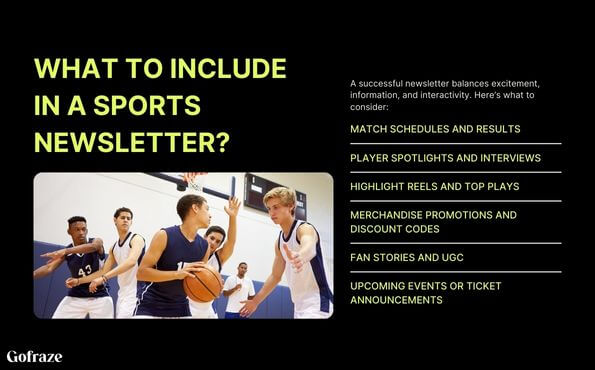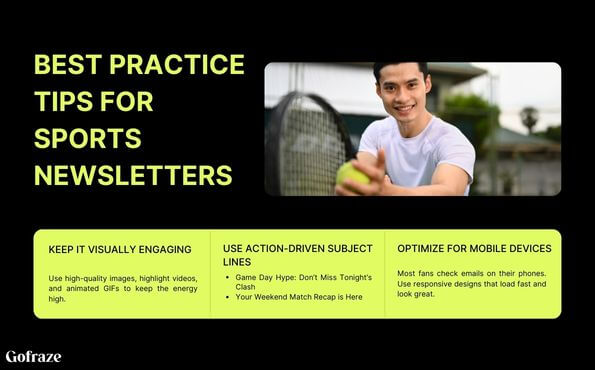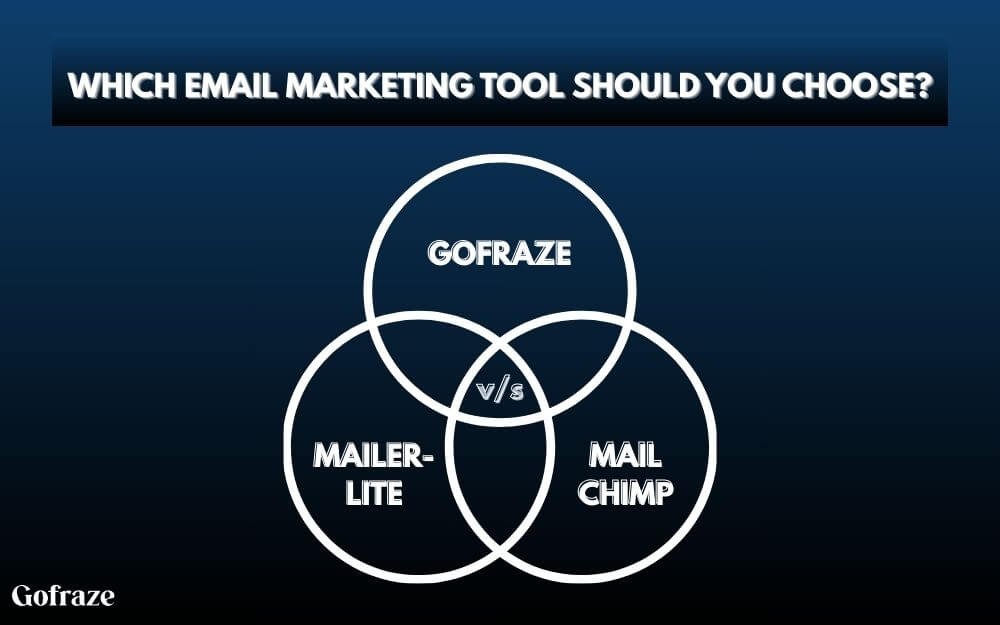Email Marketing for Car Dealerships: Strategies, Ideas & Best Practices
Explore powerful email marketing strategies for car dealerships. Learn to attract, engage, and convert leads into loyal customers with ease.
In today’s hyper-connected world, fans crave more than just watching their favorite team play. They want inside access, exclusive stories, and constant connection. That’s where sports newsletters come in — the MVP of fan engagement. Whether you’re managing a professional team, a local club, or a sports brand, newsletters are a powerful tool to energize your audience, drive traffic, and grow loyalty.
Let’s dive into how to make your sports newsletter stand out — with examples, templates, tips, and more.
A sports newsletter is a recurring digital publication — often sent via email — that delivers curated content related to sports teams, leagues, athletes, merchandise, or fan communities. It typically includes match results, upcoming schedules, exclusive interviews, behind-the-scenes content, and promotions.
It’s more than just an email. It’s your direct line to fans’ inboxes — and hearts.

Sports fans are passionate. Newsletters help nurture that passion by providing regular updates and exclusive content that builds a strong emotional connection.
Whether you’re selling game tickets, launching new merchandise, or sharing the latest blog post, newsletters are a great way to promote your offerings directly to your audience.
Fans love exclusivity. Give them sneak peeks, injury updates, locker room stories, or coach interviews they won’t find anywhere else.
Use your newsletter to guide fans toward ticketing pages, your merchandise store, or highlight videos — boosting conversions with just a click.

A successful newsletter balances excitement, information, and interactivity. Here’s what to consider:
The NBA delivers personalized newsletters featuring game recaps, top player performances, highlight reels, and upcoming match schedules. Fans receive content based on their favorite teams, keeping it relevant and engaging. These newsletters also include ticket offers and links to exclusive merchandise. Their clean layout and dynamic content make it easy for fans to stay in the loop.
NFL teams send regular newsletters with detailed post-game summaries, injury reports, and upcoming game previews. Content is often customized by fan club or favorite team. These emails maintain high engagement through video highlights, quotes from coaches, and promotional offers. It’s an excellent example of using storytelling to deepen fan loyalty.
Nike’s newsletters go beyond product marketing. They include motivational content, personalized running plans, stories from the running community, and challenges to keep users active. The design is sleek and minimal, with a strong focus on user experience. These emails help build community while subtly promoting Nike gear and apps.
High school, college, and community teams use newsletters to keep fans, parents, and students updated on match results, event schedules, and fundraising campaigns. They often highlight individual player achievements and share fan photos or local sponsor messages. These newsletters build grassroots support and promote community involvement.
Tip: Use platforms like Gofraze to explore real-world newsletter templates and designs. It’s a great way to get layout inspiration and kickstart your campaign with sports-specific email tools.

Use high-quality images, highlight videos, and animated GIFs to keep the energy high.
Examples:
Tailor content for different fans — VIP members, season ticket holders, merchandise buyers, or youth players.
Most fans check emails on their phones. Use responsive designs that load fast and look great.
Whether it’s weekly or biweekly, stick to a publishing schedule and use consistent branding (team colors, fonts, tone).
Countdown timers for match kickoff, polls for MVP voting, or quick quizzes significantly boost engagement.
Select a pre-designed template matching your team’s style and goals. Tools like Publicate, Mailchimp, and Gofraze Email Marketing Platform offer sports-specific layouts that save time and look professional. Look for designs that support multimedia, clear sections, and call-to-action buttons. Ensure the structure fits the content types you plan to include, like match recaps or merchandise promotions.
Make your newsletter come alive with videos, highlight reels, live score widgets, or animated GIFs. Embed YouTube or Vimeo clips showcasing key plays or fan celebrations. Use RSS feeds or plugins to pull in real-time scores or social media updates. This makes your newsletter feel current and keeps fans engaged with each send.
Incorporate your team’s colors, logo, fonts, and tone throughout the newsletter. Consistent branding builds recognition and trust while creating a sense of community. Add a professional header and footer with social links, team slogans, or mascots. Maintain the same layout style across newsletters to create a familiar experience.
Divide your audience into groups like season ticket holders, casual fans, or youth team parents. Tailor content to each segment — for example, send early ticket access to VIPs or training tips to young players. Personalize subject lines and greetings using names or team preferences. This increases open rates and creates a deeper connection.
Before sending, run A/B tests on subject lines, visuals, or CTAs to find what performs best. Preview your email on both desktop and mobile devices to check formatting. Choose optimal send times, like the day before a game or right after a big win. Finally, monitor metrics like open rates and click-throughs to refine future campaigns.
Explore top-performing examples and pro tips to boost fan engagement. Use Gofraze to build winning newsletters with ease.
Sports newsletters aren’t just a marketing tool — they’re an experience. Done right, they deepen the connection between your team and its fans, drive revenue, and build lasting loyalty. Whether you’re a pro franchise or a grassroots club, your fans are waiting for that next update in their inbox.

Explore powerful email marketing strategies for car dealerships. Learn to attract, engage, and convert leads into loyal customers with ease.

Learn how to craft the perfect webinar invitation email using key tips, templates, and examples to boost sign-ups and engagement.

Compare MailerLite, Mailchimp, and Gofraze side by side. Explore features, pricing, user reviews, and the best pick for your 2025 email marketing needs.

Get unlimited forms that turn your traffic into real subscribers — totally free
Start now - free forever